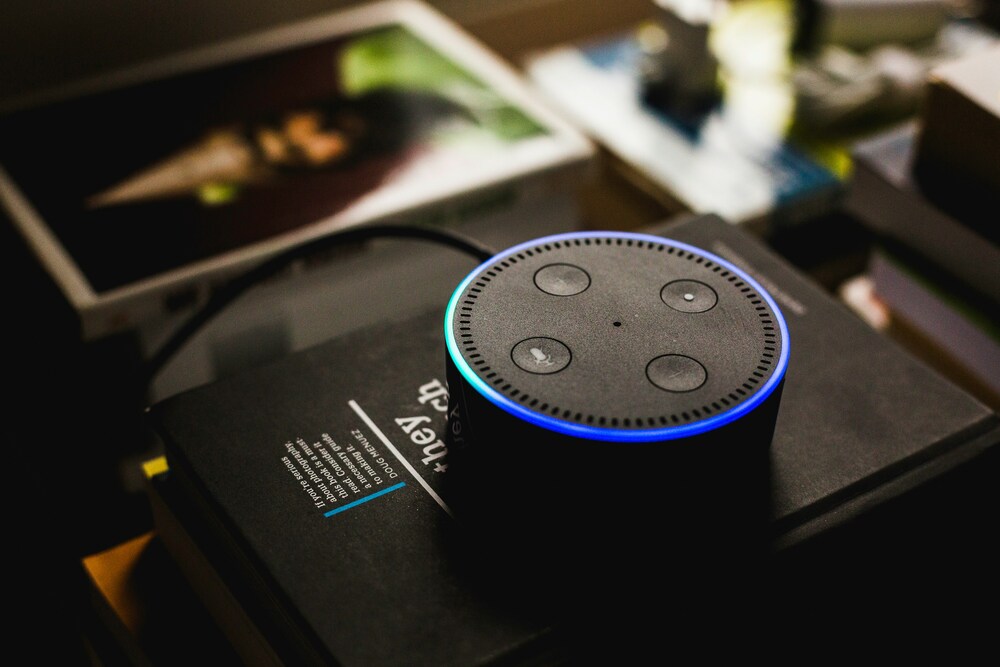- Home
- Articles
- Architectural Portfolio
- Architectral Presentation
- Inspirational Stories
- Architecture News
- Visualization
- BIM Industry
- Facade Design
- Parametric Design
- Career
- Landscape Architecture
- Construction
- Artificial Intelligence
- Sketching
- Design Softwares
- Diagrams
- Writing
- Architectural Tips
- Sustainability
- Courses
- Concept
- Technology
- History & Heritage
- Future of Architecture
- Guides & How-To
- Art & Culture
- Projects
- Interior Design
- Competitions
- Jobs
- Store
- Tools
- More
- Home
- Articles
- Architectural Portfolio
- Architectral Presentation
- Inspirational Stories
- Architecture News
- Visualization
- BIM Industry
- Facade Design
- Parametric Design
- Career
- Landscape Architecture
- Construction
- Artificial Intelligence
- Sketching
- Design Softwares
- Diagrams
- Writing
- Architectural Tips
- Sustainability
- Courses
- Concept
- Technology
- History & Heritage
- Future of Architecture
- Guides & How-To
- Art & Culture
- Projects
- Interior Design
- Competitions
- Jobs
- Store
- Tools
- More
Maximizing iPad Usage for Students: Tips and Tools for Enhanced Learning

In today’s digital age, iPads have become essential tools for students, transforming how they learn and interact with educational content. Equipped with a protective case, charging cord, and a Gen2 Apple Pencil, these devices are ready to handle a variety of academic tasks right out of the box. With preloaded apps like Zoom, Slack, and Notability, students can seamlessly participate in virtual classes, collaborate on projects, and take detailed notes.
The versatility of the iPad extends beyond basic functionalities. For specialized projects requiring advanced features like LiDAR, the Gen3 iPad Pro is available upon request. Additionally, students can customize their devices by logging into their Apple ID to download necessary iOS apps and save data to iCloud. Whether it’s for a training program or a workshop, iPads offer a comprehensive solution for modern educational needs, making them indispensable in academic settings.

Table of Contents
ToggleBenefits of iPad Usage for Students
Enhancing Learning Through Interactivity
iPads foster interactive learning environments. With applications like Zoom, Jamboard, and Poll Everywhere, students engage more actively during lessons. These tools provide real-time collaboration, enabling dynamic discussions and instant feedback. Notability and Apple Pencil promote handwriting and annotation, enhancing note-taking and retention. Features like split-screen view and Apple’s augmented reality (AR) capabilities expand traditional learning methods into immersive experiences.
Supporting Diverse Learning Styles
iPads accommodate multiple learning styles. Visual learners benefit from apps like Google Slides and Microsoft PowerPoint, offering multimedia presentations. Auditory learners find resources in podcasts and audio notes available through OneNote and Slack. Kinesthetic learners can use digital inking and interactive simulations for hands-on practice. Additional accessibility features, including voice-over and text-to-speech, ensure that students with diverse needs receive personalized support. By integrating these diverse tools, iPads help create inclusive educational environments.
Key Features of iPads That Support Education
Accessibility and User-Friendly Interface
iPads come with a wide range of built-in accessibility features, making them inclusive tools for education. VoiceOver provides screen-reading functionality, while Magnifier aids students with visual impairments by enlarging text and images. AssistiveTouch offers alternative touch-based navigation for those unable to use standard gestures.
The user-friendly interface of iPads stands out, designed with ease of use in mind. Intuitive app layouts and seamless multitasking help students switch between educational apps like Notability and Google Docs without disruption. Combine this with the responsive touch screen, and students can engage with content in a way that accommodates their individual learning styles.
Portability and Durability for Daily Use
iPads are lightweight and slim, making them highly portable. This design allows students to carry them easily in backpacks, ensuring they have access to their learning materials anywhere. The battery life typically extends through a full school day, supporting continued use without frequent recharging.
The durable build of iPads, accompanied by a protective case, charging cord, and 20v brick, adds to their suitability for daily educational use. Gen2 Apple Pencil support enhances note-taking and creative tasks, with its magnetic charging ensuring it’s always ready for use. For more specialized educational needs, the Gen3 iPad Pro offers advanced features like LiDAR for projects requiring precise spatial measurements.
Our commitment to equipping students with these robust tools highlights how integral iPads have become in shaping modern educational experiences.

How iPads Facilitate Different Learning Activities
Note-Taking and Organization
iPads provide exceptional tools for note-taking and organization. Apps like Notability and Microsoft OneNote let students create handwritten notes, type text, and organize materials in digital notebooks. With the Apple Pencil, users can highlight, draw diagrams, and annotate PDFs directly. This flexibility helps streamline study sessions and keeps notes easily searchable. Cloud services like iCloud ensure that notes and documents sync across devices, offering access anytime, anywhere.
Multimedia Integration and Creative Projects
The iPad’s multimedia capabilities enhance creative projects. Students can use Google Slides and Microsoft PowerPoint for presentations incorporating text, images, and videos. Apps like Jamboard enable collaborative brainstorming sessions with real-time input from multiple users. Creative projects benefit from the iPad’s camera and editing tools, allowing for the creation of high-quality videos and photos. Apps such as iMovie and GarageBand support multimedia production, facilitating vibrant and interactive learning experiences.
Maximizing iPad Use in the Classroom
Strategies for Teachers to Integrate iPads
Teachers can enhance classroom learning by integrating iPads in various ways. Annotate slides during lecture presentations to provide real-time feedback. Use apps like Notability and Microsoft OneNote for annotating, grading, and providing feedback on student work. Host collaborative online review sessions with tools like Zoom. Conduct remote office hours through web conferencing to ensure accessibility for all students. Produce screencasts and instructional videos to aid in asynchronous learning. Record lectures using the iPad’s built-in camera and apps like iMovie for reflection, feedback, and improvement. Utilize educational apps such as Google Docs and Canvas to manage and organize class notes efficiently.
Student Collaboration and Group Work
iPads facilitate student collaboration and group work effectively. Use apps like Slack and Jamboard to enable collaborative activities and study sessions. Annotate shared documents during collaborative efforts using Google Docs and Microsoft Word. Leverage features like digital art creation and LiDAR scanning for project-based learning. Encourage students to use the iPad’s accessibility features to ensure that all group members can contribute equitably. Integrate polling apps like Poll Everywhere to gather instant feedback and promote interactive discussions.

Managing iPads in Educational Settings
Setting Up and Maintaining iPads for Classroom Use
When setting up iPads, install essential apps and make sure configurations align with curriculum needs. Each iPad should come preloaded with specific educational apps like Canvas Teacher, Canvas Student, Notability, and Zoom. These tools support classroom activities such as note-taking, assignment submissions, and virtual classes.
Maintain the devices by regularly updating the iOS and apps to ensure compatibility and security. Encourage students to back up their data to iCloud. This step minimizes data loss and facilitates a smooth transition between devices if needed.
A standardized setup process helps streamline device management. Create and follow a clear set of procedures for software installation and updates. Use mobile device management (MDM) tools to oversee all iPads remotely, which allows us to push updates and troubleshoot issues efficiently.
Addressing Challenges and Solutions
Implementing iPads in educational settings presents challenges. Limited Apple Pencil support in certain apps like Bear and Ulysses affects the versatility of digital note-taking. To mitigate this, select apps that fully utilize Apple Pencil’s capabilities for enhanced functionality.
File management poses another challenge. Encourage consistent organization within apps like Google Drive for easy access and sharing. Utilize the built-in Screen Time feature to monitor and manage usage, ensuring students stay focused on educational tasks.
Some apps may not handle multimedia well. For example, Drafts is text-centric, making it unsuitable for capturing audio or video. Opt for apps like Notability that support varied media types.
Security is paramount. Educate students about safeguarding their devices and personal data. Enforce secure login practices and enable features such as Duo Mobile for two-factor authentication. By addressing these challenges proactively, we create a more efficient and secure learning environment for students using iPads.

Conclusion
Leveraging iPads in educational settings offers a multitude of benefits that augment the learning experience. Customized applications for specific courses empower students by providing tailored resources to meet their individual needs. For instance, pre-installed apps like Pages, Keynote, and Numbers are invaluable for content creation and presentations in classrooms.
Considering the hardware, the Gen2 Apple Pencil bundled with the iPad enhances note-taking and creative tasks. Meanwhile, the Gen3 iPad Pro, reserved for projects requiring advanced features like LiDAR, supports sophisticated tasks in fields such as architecture and engineering.
Device management remains critical to ensure a smooth learning experience. Employing Mobile Device Management (MDM) tools for remote management helps maintain device security and operational efficiency. Regular updates and backups through these tools mitigate technical issues and prevent data loss.
Addressing challenges like file management and limited Apple Pencil support involves using cloud services like iCloud, Google Drive, and Dropbox for seamless file sharing and storage. These services ensure students can access their work from any device, which is crucial for collaborative projects.
To fully utilize the iPad’s capabilities, students should retake practice quizzes and exams by employing features like Split View, which allows multitasking with multiple apps simultaneously. This method enhances focus without the distraction of flipping through technical material. Additionally, setting app limits using the Screen Time feature ensures dedicated focus on practice assignments.
By integrating these strategies, educators and students can maximize the educational benefits of iPads. From enhancing creativity and interactive learning to ensuring efficient device management, iPads prove to be versatile tools in modern education, catering to a wide range of academic requirements.
Incorporating iPads into the educational framework transforms traditional learning environments, making them more engaging and productive. With the right management tools and strategies, students are poised to excel in their academic pursuits using iPads.
- best iPad tools for students
- educational apps for iPad
- effective iPad study tools
- enhanced learning with iPad
- how to use iPad for studying
- improving learning with iPad
- iPad accessories for students
- iPad apps for student productivity
- iPad educational software
- iPad for education tips
- iPad in classroom settings
- iPad learning tools for students
- iPad tips for better learning
- iPad usage tips for students
- maximizing iPad usage in education
- note taking apps for iPad
- student guide to iPad
- student productivity apps for iPad
- using iPad for online learning
Submit your architectural projects
Follow these steps for submission your project. Submission FormLatest Posts
How Virtual Architecture Is Redefining Design From Real Time Worlds to Built Impact
Discover how virtual architecture is redefining design from static sketches to immersive,...
Designing a Starter Smart Home Without Breaking the Bank
Smart homes don’t have to cost a fortune. Many homeowners think they...
Style Meets Security: Choosing Entry Solutions That Do Both
When it comes to homes and businesses, entryways are more than just...
Top 5 Desktop Rebuild Cost Assessment Solutions for Property Professionals
Do you ever lay awake at night, playing out scene after scene...












Leave a comment